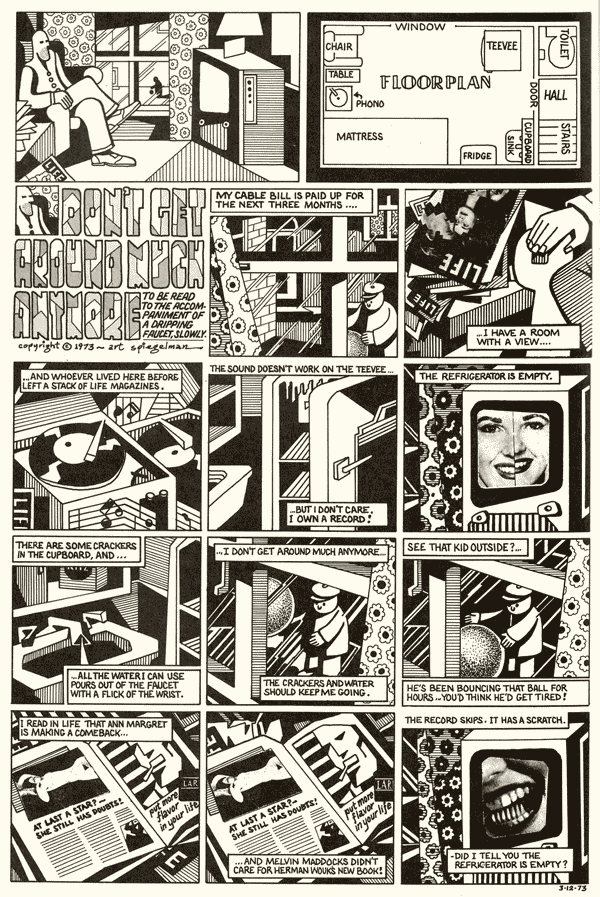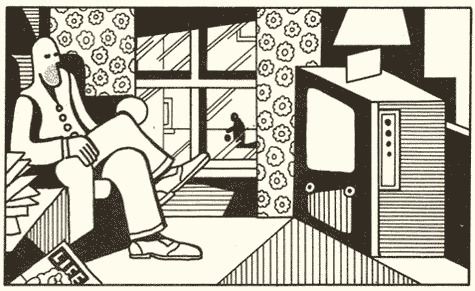In the new book Metamaus, Art Spiegelman talks with Hillary Chute about how his Pulitzer Prize-winning comic about the Holocaust, Maus, came to be. In this exclusive excerpt from those conversations, Spiegelman talks about the nature of comics and describes an early one-page comic of which he is “inordinately proud,” seen in full below.
You’ve emphasized that, as a form, comics doesn’t have to be about good drawing per se. Instead you talk about what you call picture writing.
If anything, the comics that I have the most difficulty looking at are the ones that are more illustrative, because they’re the ones that break the spell rather than create it. There’s a sub-genre of comics known as fumetti—the photo-comics that have been very popular in Mexico and Italy—that tend to really not work well formally. Photos tend to have too much information; it’s very hard to suppress the unnecessary. The work that actually works best deploys information visually to give you the necessary signs and not too much more. I love doodle-writing and prefer signs made with verve that express the personality of the sign-maker.
The cartoon is a drawing that gets to essences. And narratively, comics are an essentialized form of diagramming a narrative movement through time. For me, it’s an art of compression that breaks narrative events down to their most necessary moments. If you show the same panel three times, that is a lot of time passing. If you want to indicate that kind of duration in film it takes quite a few attenuated beats to make it register.
Can you talk more about your formal interests previous to Maus?
I’d become interested in the avant-garde cinema of the ’60s—nonnarrative films by Ken Jacobs, Ernie Gehr, and Stan Brakhage became important to me. They led me to ask: at what point do juxtaposed pictures become comics? And that led me to do a page in 1973 called “Don’t Get Around Much Anymore.” It mostly shows a man sitting in his living room, and details of that room. The captions are just flat, alienated sentences, like “The refrigerator is empty.” It was based on something I’d written while depressed and I decided to use it as a scenario for a comic even though—or, rather, because—almost nothing happens. I wanted to find out what could happen when nothing’s happening. Everything’s “out of sync” between the words and the illustrations—they’re not functioning as illustrations so much as visual tugs that keep your eye moving around the page but trapped on it, which I guess is why the strip is titled, after the Duke Ellington song, “Don’t Get Around Much Anymore.” There’s only one moment of continuous movement on the page: out the window, your eyes skitter back and forth between two panels to see a kid bouncing a ball. It’s the only escape into life and physical movement. It was a hard-won page, one I remain inordinately proud of, trying to find a new way of using these words and pictures together to indicate the languor and timeless depression I still remain prone to: the feeling that “Oh, once I untangled it, about as compelling here I am again, trapped, and I ain’t never gonna be anywhere else.”

“Don’t Get Around Much Anymore,” a one-page comic by Art Spiegelman, 1973.
Art Spiegelman, © 1973
